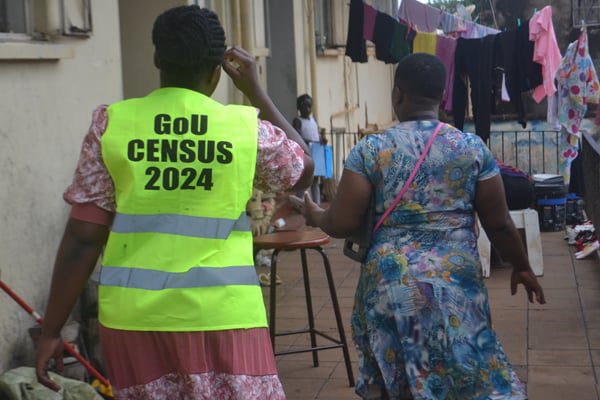By ISMAIL LADU
Over the last decade, Uganda’s population has increased by 11.3 million, according to the Uganda Bureau of Statistics (UBOS) census report released on Thursday, with the numbers growing from 34.6 million people to 45.9 million persons.
The census results presented on Thursday in Kampala by the Census Commissioner Chris Mukiza, indicate that despite the growing population, between 1991 and 2024, the average household is slowly shrinking.
With 45.9 million people, Uganda is the fourth most populous country in the East African Community after DR Congo at 99 million, Tanzania at 65 million, and Kenya at 54 of the 302 million people that call the region bloc home, according to the population estimates.
“Population growth trajectories on the downside partly also depict development is improving. Population decline is highly linked to improved social services, especially education and health. As people become more educated, they postpone the age at which they start giving birth for both men and women,” a Senior Research Fellow, Economic Policy Research Centre Madina Guloba, said.
She adds that the decline in size of family does not necessarily mean a better quality of life as inequalities are starting to bite: “Increasingly, we have resources in fewer hands and meagre among the majority.”
In 1991, the population growth rate was at 3.2 per cent, dropping to 3.0 in 2002 and 2.9 per cent in 2024, coupled with an increase of over 10 million, which President Yoweri Museveni, who was surprised that the total numbers were below his expectations of 49 million, attributes to immunisation and fewer children dying of immunisable diseases.
Advertisement
While officially releasing the preliminary results on Thursday, President Yoweri Museveni said the Census confirms that Uganda has entered lower middle-income status.
Read: Uganda kicks off census exercice
Ubos Executive Director Chris Mukiza delivers his remarks during the release of preliminary 2024 national census results at Serena Hotel in Kampala, Uganda on June 27, 2024. PHOTO | DAILY MONITOR | NMG
“This Census is going to prove many things. Do you remember the other discussion we had that Uganda has entered the lower middle-income status? I was estimating that the population now is like 48 million people. As you see here, it is now 45.9, roughly 46 million people. And the Gross Domestic Product—the other day, they were saying it was 50-something billion. You can see now that the other level of middle-income status is being confirmed by figures,” he said.
Dr Fred Muhumuza, a policy analyst and former advisor at the Ministry of Finance, Planning and Economic Development says the declining growth rate is due to increased use of contraceptives.
The female population of 51 per cent remained unchanged from the previous census while Buganda in Central Uganda continued to be the habitat of the majority of Uganda with a population of 11 million inhabitants.
The Census also reveals that Uganda is a young country with children between the ages of 0-17years making up 50.5 per cent of the population and youth between the ages of 18-30years comprising 22.7 percent while older persons in the range of 60+ make up just 5.0 percent of the nearly 46 million population.
Despite pulling off the census, it wasn’t without challenges. Hard-to-reach areas, difficult-to-access places in Greater Kampala Metropolitan, and failure to access households, and gated homes were some of the challenges that enumerators had to grapple with in the course of the census. Unavailable respondents and deliberate refusals further complicated this to cooperation due to religious cults.
Even with all the aforementioned challenges, Dr Mukiza concluded by saying that the $1.9 census cost per capita was a good deal for the largest population and housing census Uganda has national operation conducted compared to $2 in Kenya.
This year’s census was the sixth such exercise to be conducted since Uganda gained independence in 1962 and was a comprehensive snapshot of a country’s population, providing data on the size, location, and characteristics of a population; their housing conditions, health service availability, and their general welfare.
The National Planning Authority (NPA) is expected to use the data collected to create a model for development plans identify national strategic priorities, match development programs, and get the best way to distribute resources across the country to promote long-term poverty alleviation, socioeconomic change, and development programs.
The government also plans to use the data to track the implementation of the Parish Development Model (PDM), which has been praised as the magic bullet in turning over 60 percent of Ugandans from a subsistence way of life to a money economy.
Source link : https://www.theeastafrican.co.ke/tea/news/east-africa/uganda-s-population-now-at-45-9m-people-ubos-says-4672498
Author :
Publish date : 2024-06-28 15:33:23
Copyright for syndicated content belongs to the linked Source.
